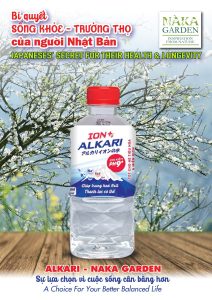
- Beauty support
- Replenish minerals for the body
- Supports detoxification
- Balances the acidic environment in the body
- Support for people with stomach disease, gout, and obesity

According to scientists, about 2-3 billion years ago, ancient cyanobacteria produced oxygen. This bacterium increases the amount of oxygen in the earth’s atmosphere. They performed photosynthesis in the cell. The numerous chlorophyll (photosynthetic organ) seeds of all plants are produced by evolved cyanobacteria. Plant’s cells have attracted cyanobacteria to themselves through an intrinsic symbiotic mechanism. In contrast, cyanobacteria cling to plants for protection. During the process of parasitic, cyanobacteria perform the function of converting sunlight into energy for plants.
(Source: https://www.scientificamerican.com/)
While humans, animals, and factories emit CO2 (carbon dioxide) and plants absorb it. Plants keep the earth cooler, provide food, shelter people and animals, and make the world a better place. At the chlorophyll seeds on the leaves, the chlorophyll receives sunlight for photosynthesis. Leaves are the main part of the plant’s food production: absorbing energy from the sun, and converting water and CO2 into sugars and starches, which in turn become food to help plants grow, flower, and bear fruit. Do you know: the tiny holes are the way for oxygen and CO2 to come in and out, on the leaves of plants.
In traditional medicine, oxy is called oxygen (O2), which is one of the basic substances that create and maintain life. Oxygen sustains the life of the human body. When the brain is not supplied with oxygen, after 4 to 5 minutes, damage begins, after 9-10 minutes, irreversible damage occurs. All major structural groups of molecules in living organisms such as proteins, carbohydrates, and fats contain oxygen. Oxygen is one of the three most abundant substances in living organisms, next to carbon and hydrogen. There are many processes of synthesizing different organic substances in the human’s body, so these 3 substances participate in reactions to produce processes that help the body survive and develop. Moreover, a common role of oxygen is to participate in the transportation of blood including red blood cells, hemoglobin… as well as transport nutrients throughout the body.
The green of leaves is a process to help you create the healthiest, best and cheapest energy. That is the reason for visitors to NaKa Garden to take care and see the green of plants.
The original purpose of NàKa Garden is to take care of a small garden into a place for families and relatives to live in harmony with nature and breathe fresh air every weekend. But it is the poetic scenery and nature-friendly activities of NàKa Garden that make this place a favorite destination for many tourists.
In May 2020, NàKa Garden officially became a legal entity with the name NàKa Garden ecological agricultural cooperative. In the development strategy of NàKa Garden, many activities have a sense of community responsibility such as: TCVN 11892-1:2017 (VietGap Good Agricultural Practices); MAI AM Fund (Elevating children to school; Accompanying building facilities for local preschools); Organizing training and practical guidance; Career counseling; Creating jobs for local people to have a stable income…has been becoming a bright spot.